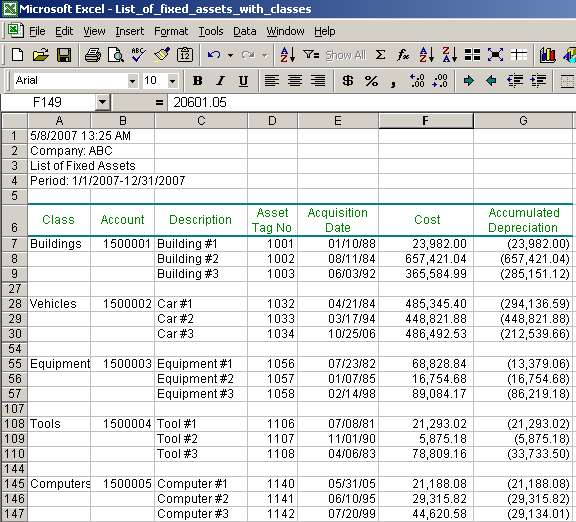Excel Fill Down Function, Excel Fill Down Examples
1) Export required information from your accounting application into Excel
Most available accounting software packages have such functionality. The file we will use in our example is a list of fixed assets for Company ABC - List of fixed assets with classes. You may want to download the file and have it open while you are reading this lecture.
2) Identify the columns in which you need to fill down empty cells
In our example, we want to have empty cells populated in columns A and B for table headers Class and Account. We may need that to be able to build a pivot table or create a VLOOKUP function for our calculations. Note that as of now, there are several fixed asset class and account values in columns A and B shown on rows 7, 28, 55, 108 and 145. All cells in columns A and B between those rows are empty. See below and tab Step 1-2 in our listing of fixed assets (some rows were hidden to be able to show rows 7, 28, 55 and 145 on one screen):

3) Insert new columns next to columns with empty cells
We will insert one column after column A (Class) and one column after column B (Account). To insert a column after column Class, select entire column B by clicking on its caption (very top gray colored area with "B" in it); then right click on it and select Insert from the popup menu. See below (and tab Step 3 in our listing of fixed assets):

Page 2 of 6